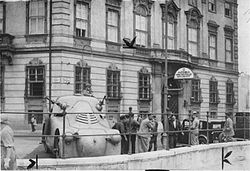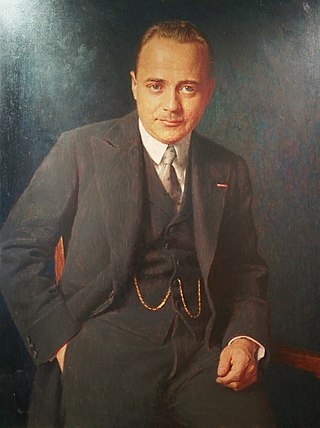
Engelbert Dollfuß was an Austrian politician who served as Chancellor of Austria between 1932 and 1934. Having served as Minister for Forests and Agriculture, he ascended to Federal Chancellor in 1932 in the midst of a crisis for the conservative government. This crisis culminated in the Self-elimination of the Austrian Parliament, a coup sparked by resignation of the presiding officers of the National Council. Suppressing the Socialist movement in the Austrian Civil War and later banning the Austrian Nazi Party, he cemented the rule of Austrofascism through the First of May Constitution in 1934. Later that year, Dollfuss was assassinated as part of a failed coup attempt by Nazi agents. His successor Kurt Schuschnigg maintained the regime until Adolf Hitler's Anschluss in 1938.

Kurt Alois Josef Johann von Schuschnigg was an Austrian politician who was the Chancellor of the Federal State of Austria from the 1934 assassination of his predecessor Engelbert Dollfuss until the 1938 Anschluss with Nazi Germany. Although Schuschnigg considered Austria a "German state" and Austrians to be Germans, he was strongly opposed to Adolf Hitler's goal to absorb Austria into the Third Reich and wished for it to remain independent.
The Heimwehr or Heimatschutz was a nationalist, initially paramilitary group that operated in the First Austrian Republic from 1920 to 1936. It was similar in methods, organization, and ideology to the Freikorps in Germany. The Heimwehr was opposed to parliamentary democracy, socialism and Marxism and fought in various skirmishes against left-wing and foreign groups during the 1920s and 1930s. Some of its regional groups also opposed Nazism while others favored it. In spite of its anti-democratic stance, the Heimwehr developed a political wing called the Heimatblock that was close to the conservative Christian Social Party and took part in both the cabinet of Chancellor Carl Vaugoin in 1930 and in Engelbert Dollfuss' right-wing government from 1932 to 1934. In 1936 the Heimwehr was absorbed into what was at the time the only legally permitted political party in Austria, the Fatherland Front, and then later into the Frontmiliz, an amalgamation of militia units that in 1937 became part of Austria's armed forces.

Ignaz Seipel was an Austrian Roman Catholic priest, theologian and politician of the Christian Social Party. He was its chairman from 1921 to 1930 and served as Austria's federal chancellor twice, from 1922 to 1924 and 1926 to 1929. Seipel's terms in office saw the reorganization of the state's finances and passage of the 1929 amendment to the federal constitution that strengthened the role of the Austrian President. As chancellor he opposed the Social Democratic Party of Austria and Austromarxism and supported paramilitary militias such as the Heimwehr, an organization similar to the German Freikorps.

Austrian Nazism or Austrian National Socialism was a pan-German movement that was formed at the beginning of the 20th century. The movement took a concrete form on 15 November 1903 when the German Worker's Party (DAP) was established in Austria with its secretariat stationed in the town of Aussig. It was suppressed under the rule of Engelbert Dollfuss (1932–34), with its political organization, the DNSAP banned in early 1933, but was revived and made part of the German Nazi Party after the German annexation of Austria in 1938.

Ernst Streeruwitz was an Austrian military officer, businessman, political scientist and politician. A member of the industrialist wing of the Christian Social Party, Streeruwitz served on the National Council from November 1923 to October 1930 and as chancellor and foreign minister from May to September 1929.

Wilhelm Miklas was an Austrian politician who served as President of Austria from 1928 until the Anschluss to Nazi Germany in 1938.

The Austrian Civil War of 12–15 February 1934, also known as the February Uprising or the February Fights, was a series of clashes in the First Austrian Republic between the forces of the authoritarian right-wing government of Engelbert Dollfuss and the Republican Protection League, the banned paramilitary arm of the Social Democratic Workers' Party of Austria. The fighting started when League members fired on the Austrian police who were attempting to enter the Social Democrats' party headquarters in Linz to search for weapons. It spread from there to Vienna and other industrial centres in eastern and central Austria. The superior numbers and firepower of the Austrian police and Federal Army quickly put an end to the uprising. The overall death toll is estimated at about 350.

Michael Fleischhacker is an Austrian journalist. He was director and editor-in-chief of Austrian daily Die Presse from 2004 until 2012.

Austria was part of Nazi Germany from 13 March 1938 until 27 April 1945, when Allied-occupied Austria declared independence from Nazi Germany.

The Fatherland Front was the right-wing conservative, nationalist and corporatist ruling political organisation of the Federal State of Austria. It claimed to be a nonpartisan movement, and aimed to unite all the people of Austria, overcoming political and social divisions. Established on 20 May 1933 by Christian Social Chancellor Engelbert Dollfuss as the only legally permitted party in the country, it was organised along the lines of Italian Fascism, was fully aligned with the Catholic Church, and did not advocate any racial ideology, as Italian Fascism later did. It advocated Austrian nationalism and independence from Germany on the basis of protecting Austria's Catholic religious identity from what they considered a Protestant-dominated German state.

The Republikanischer Schutzbund was an Austrian paramilitary organisation established in 1923 by the Social Democratic Workers' Party of Austria to defend the Austrian Republic in the face of rising political radicalisation after World War I. The Schutzbund, whose membership peaked at about 100,000 men in 1925, was armed and organised on military lines. In the July Revolt of 1927 it worked with government authorities to try to prevent the spread of violence, but it largely sat out the Pfrimer Putsch in September 1931 because it had failed so quickly.

Otto Planetta was an Austrian National Socialist who assassinated the Chancellor of Austria, Engelbert Dollfuß, during the July Putsch in 1934.
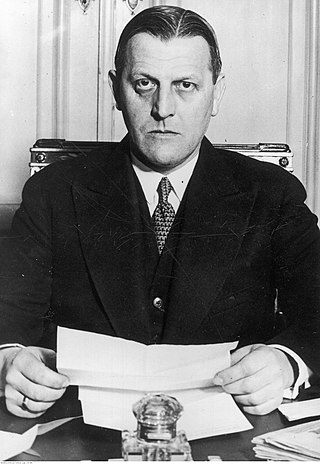
Emil Fey was an officer in the Austro-Hungarian Army, leader of the right-wing paramilitary Heimwehr forces and politician of the First Austrian Republic. He served as Vice-Chancellor of Austria from 1933 to 1934, leading the country into the period of Austrofascism under Chancellor Engelbert Dollfuß. Fey played a vital role in the violent suppression of the Republikanischer Schutzbund and, during the 1934 Austrian Civil War, of the Social Democratic Workers' Party.
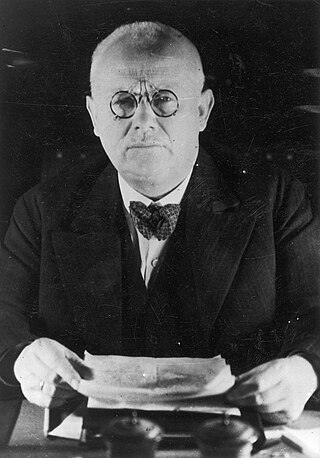
Anton Rintelen was an Austrian academic, jurist and politician. Initially associated with the right wing Christian Social Party, he became involved in the July Putsch, a Nazi coup d'état plot, in 1934.
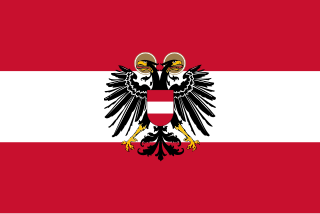
The Federal State of Austria was a continuation of the First Austrian Republic between 1934 and 1938 when it was a one-party state led by the conservative, nationalist, and corporatist Fatherland Front. The Ständestaat concept, derived from the notion of Stände, was advocated by leading regime politicians such as Engelbert Dollfuss and Kurt Schuschnigg. The result was an authoritarian government based on a mix of Italian Fascist and conservative Catholic influences.

Prince Ernst Rüdiger Camillo von Starhemberg, often known simply as Prince Starhemberg, was an Austrian nationalist and politician who helped introduce Austrofascism and install a clerical fascist dictatorship in Austria in the interwar period. A fierce opponent of Anschluss, he fled Austria when the Nazis invaded the country and briefly served with the Free French and British forces in World War II.

German nationalism is a political ideology and historical current in Austrian politics. It arose in the 19th century as a nationalist movement amongst the German-speaking population of the Austro-Hungarian Empire. It favours close ties with Germany, which it views as the nation-state for all ethnic Germans, and the possibility of the incorporation of Austria into a Greater Germany.
Fridolin Glass, also Glaß was an Austrian Nazi activist and Schutzstaffel (SS) officer. Glass came to prominence in 1934 when he became the effective leader of the July Putsch, a failed coup attempt by the Nazis in Austria.
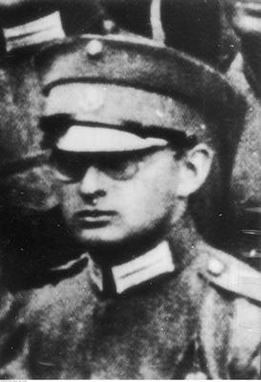
Franz Holzweber was an Austrian National Socialist who was an accomplice to the assassination of the Chancellor of Austria, Engelbert Dollfuß, during the July Putsch in 1934.
